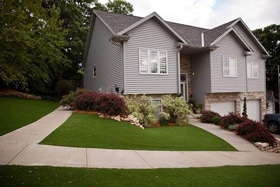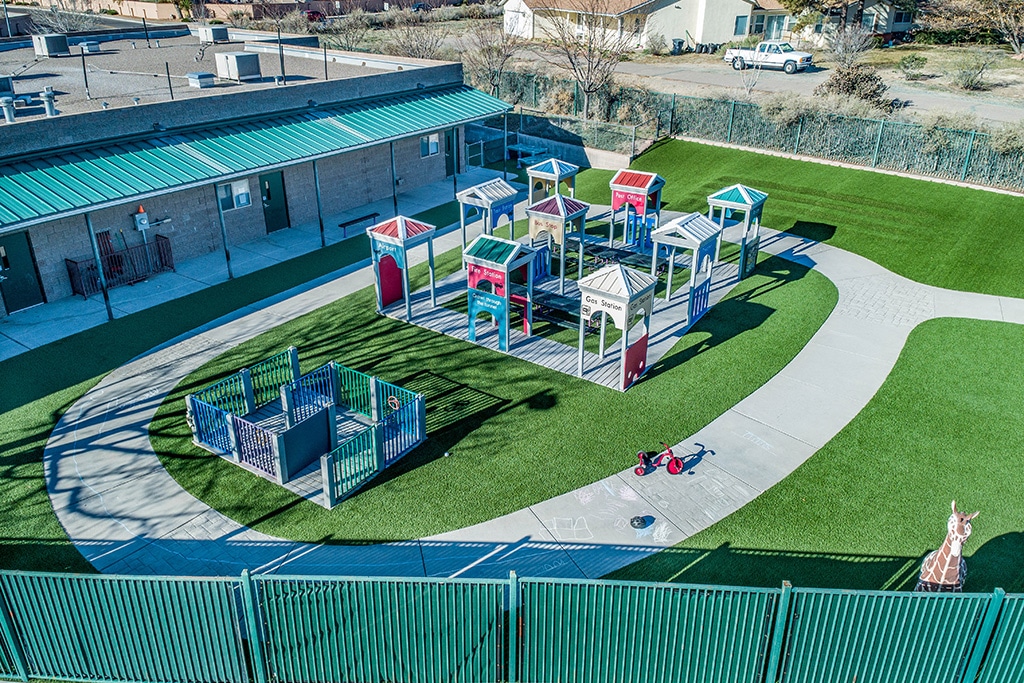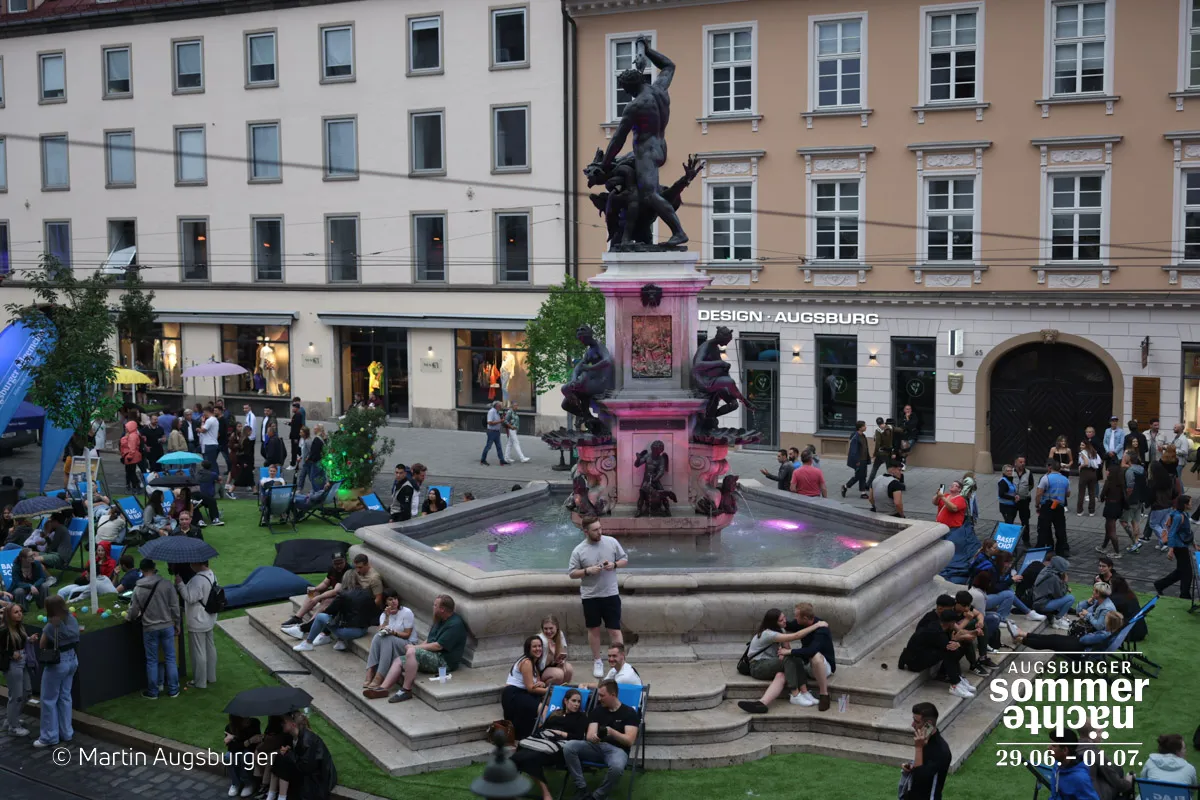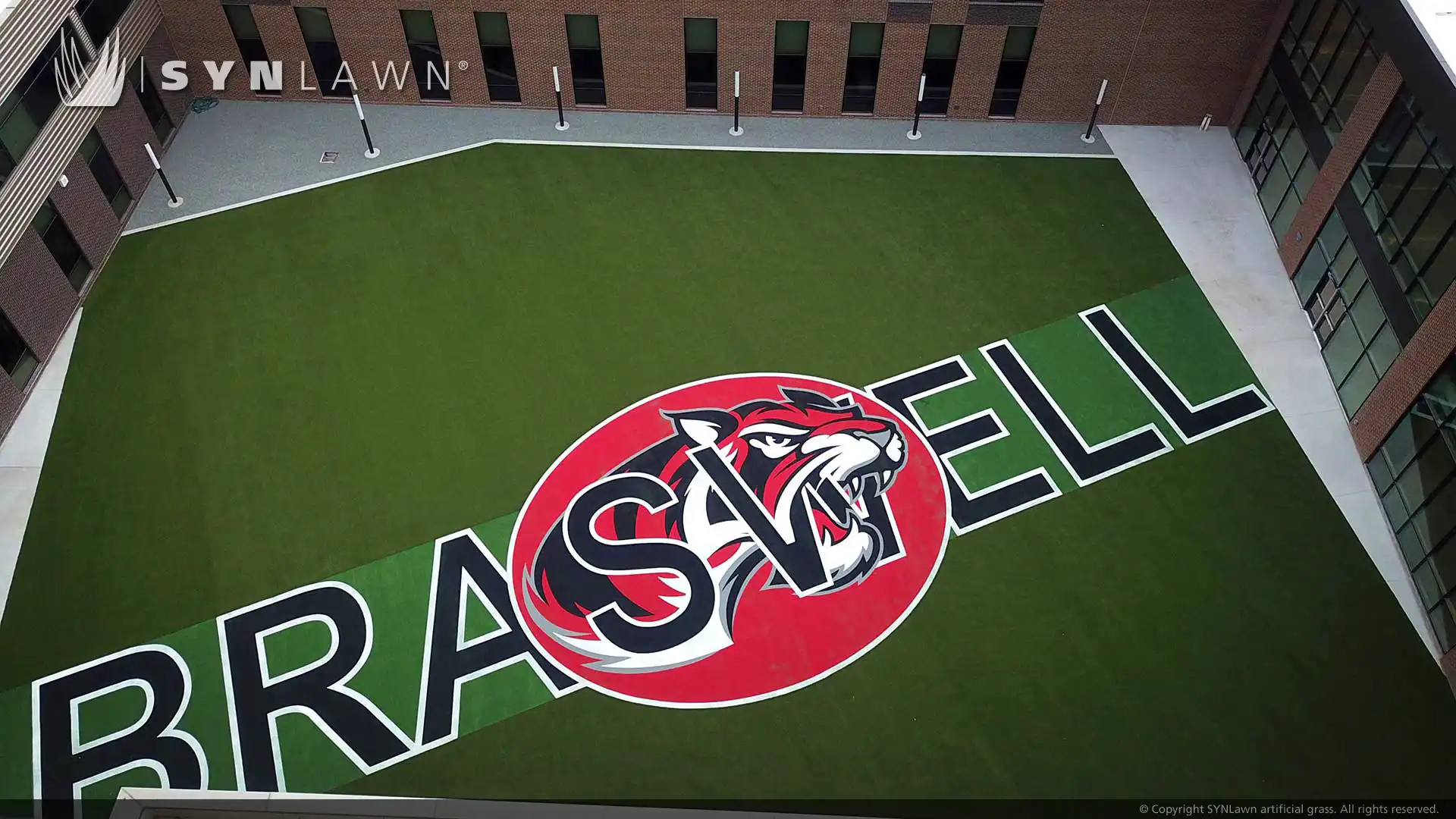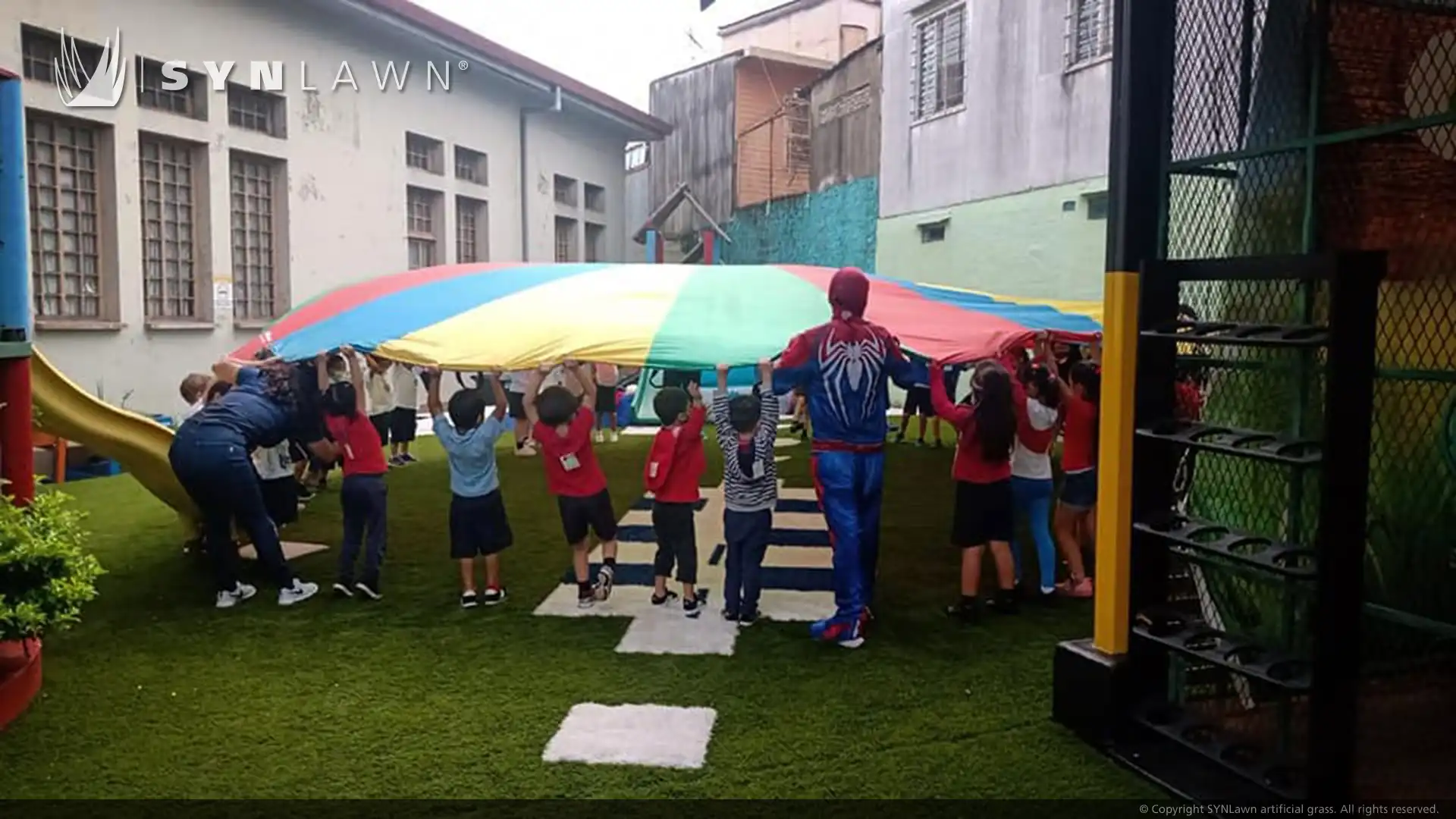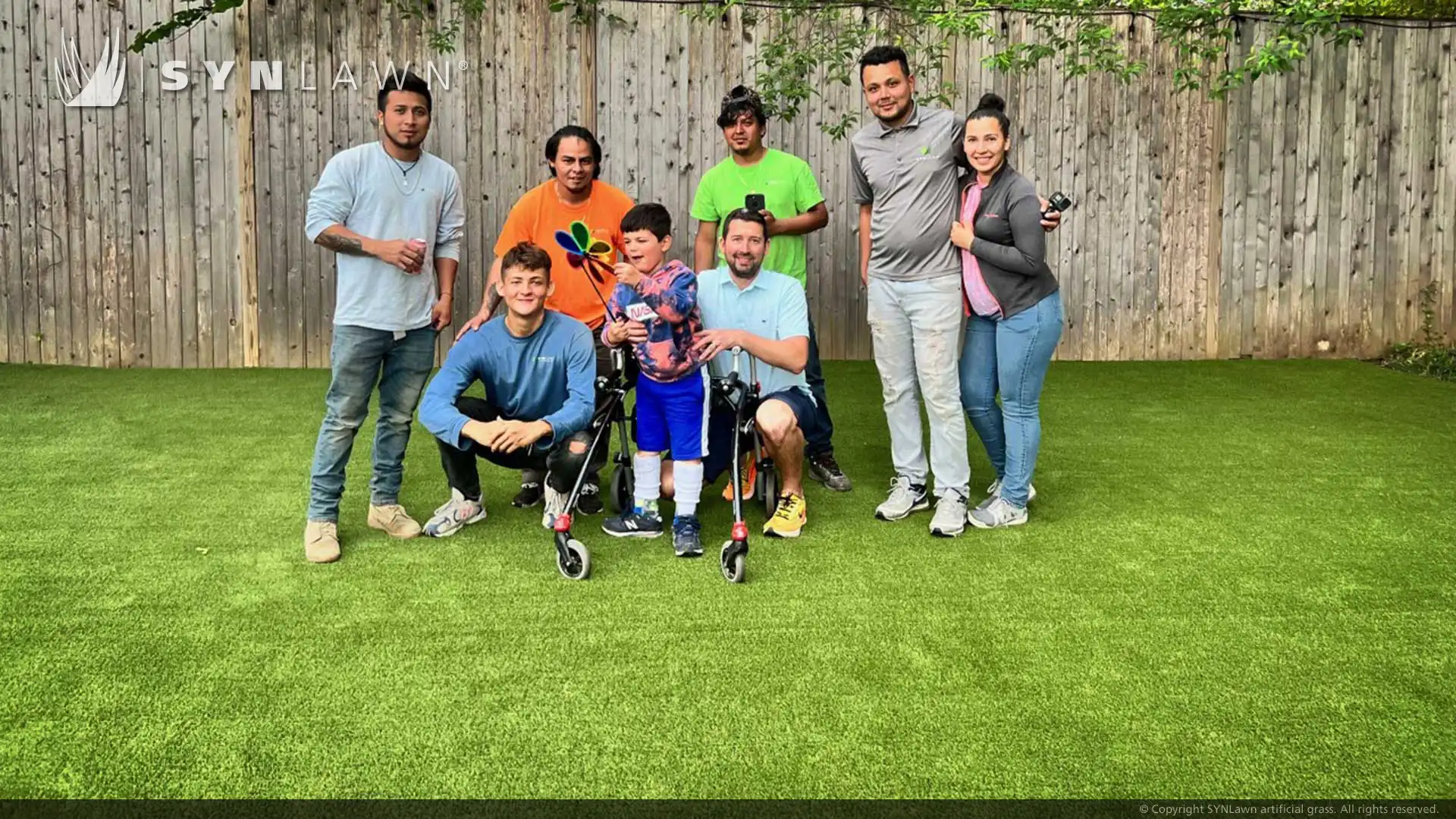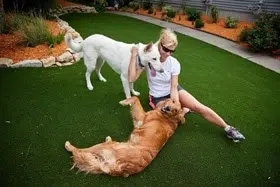
Sick of dead yard Bluffs woman installs SYNLawn
Theresa Gallo’s yard came with a warranty. That’s one of the ways her lawn is unusual. It also requires no mowing and very little maintenance. She waters it once a week, but that’s to keep active the odor-eating crystals embedded into the lawn’s fibers. In April, after several years of fighting a literally uphill battle against a challenging yard, Gallo bought a synthetic lawn. It wasn’t cheap — she said she paid about $30,000 to have the artificial turf installed — but so far, she couldn’t be happier. And if something goes wrong, if her lawn fades or tears at a seam, she’s covered by that 10-year warranty. In any case, she doesn’t have to worry about her grass dying, because it will never grow. “I’m very pleased,” she said.
Gallo’s home sits high on a hillside in a Council Bluffs neighborhood with a remarkable view of downtown Omaha. She lives there with her son, Cole, and their two large dogs, a golden retriever named Chloe and a white German shepherd called Piper.
It’s been home for eight years, and in that time Gallo has experienced a perfect storm of lawn management problems. The house sits on a significant slope with low nutrient soil, she said, creating runoff and erosion issues, and it takes a beating from the sun.
And the dogs were killing it, she said.
Though the problem was limited to the front yard — the house backs up to a wooded area — it presented an annual source of frustration and wasted money.
“I’ve had lawn care services come,” Gallo said. “I’ve re-sodded the front lawn twice, and we were getting ready to resod for a third time.”
Before she made another investment, Gallo searched online for any tips that would help her restore life to her lawn. Instead, she discovered Turf Etc., a company out of Lee’s Summit, Mo., that supplies and installs synthetic grass.
Owner Angela Grego said the company’s landscaping work includes school playgrounds, doggie day cares and rooftop installations. Residential jobs represent 20 to 25 percent of the company’s business, she said, but lawn-wearied customers like Gallo are on the rise.
“The No. 1 reason we hear is they want a putting green,” Grego said. “Or second, they’re pet owners.”
Problematic lawns have created a boon for an industry mostly known for covering sports fields, according to Tony Vena, CEO of Purchase Green, a California-based wholesaler of synthetic grass products. Vena, who works in collaboration with the Association of Synthetic Grass Installers to license contractors for turf installation, said the artificial landscaping industry has grown 30 percent annually for five years, with residential properties making up the majority of new business.
Though industry representatives call synthetic grass eco-friendly — requiring no fertilizing or gas-powered mowing, and very little watering — Zac Reicher, a turfgrass specialist with the University of Nebraska-Lincoln, said the environmental benefits of a healthy organic lawn can’t be beat.
A particular situation like Gallo’s might call for an unconventional solution, but “widespread use of this is not good for the environment,” he said.
As its name suggests, the process of installing a synthetic yard inverts the conventional wisdom associated with lawn care. First, everything living or conducive to life must go.
For Gallo’s lawn, workers excavated the topsoil, digging three to four inches down. Then they lined the ground with a weed barrier, topped it with crushed rock and put down a border of wood planks to which the unrolled turf was attached in 15-foot sections.
It took six days to create Gallo’s lawn.
“They came on Monday and left on Sunday,” she said.
She had a gallery of fake grass from which to choose, including products intended to mimic zoysia, bermuda, fescue and centipede grasses. She chose the latter in a shorter length that will make cleaning up after her dogs a breeze, with an odor-eating infill that also weighs down the lawn while keeping the blades of the polyethylene standing up straight.
While the $30,000 price tag is high, Gallo reasons that she’ll save on gas and fertilizer, and she no longer needs a mower. She’s told she can expect her lawn to last 20 years, if not longer. Aside from scooping up waste and treating the infill with water, the yard is essentially maintenance-free.
“You have to pick up sticks and blow off leaves, but that’s it,” she said.
Gallo said the response to her unconventional yard has been mixed. She’s received positive feedback from some of her neighbors but also heard through the grapevine that other residents in the area aren’t wild about her permanently manicured lawn.
From her perspective, it’s been the perfect solution to a problem that plagued her lawn for the better part of a decade, and she’s not looking back.
“It was weird seeing them tear out my yard,” she said. “But other than that, no regrets.”
To read the full story online, please click here.
